Boudhanath Stupa and Pashupatinath Temple are holy sites in Kathmandu Valley. Contemplating Buddhist prayers and the final Hindu rites in Nepal!
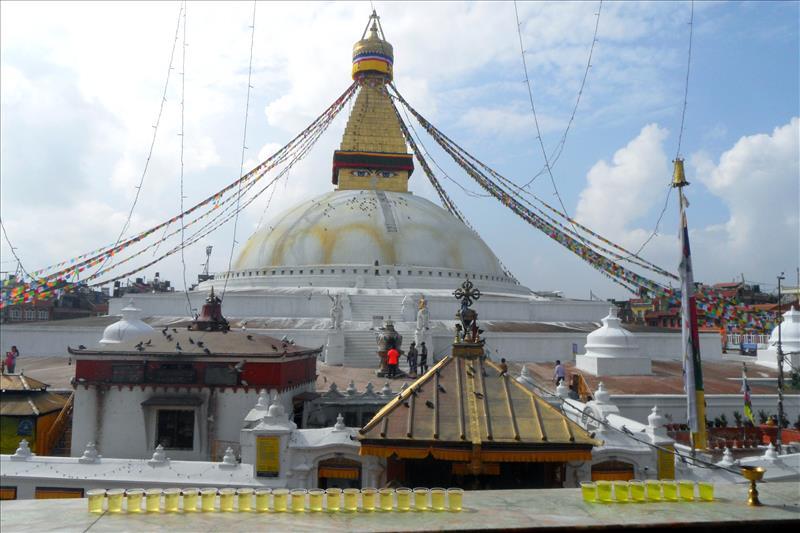
Boudhanath Stupa and Pashupatinath Temple
We got up bright and early on day 3 in Kathmandu to meet BB Bhandari, our friend from Nepal Adventure Point, who was taking us to see two unique local World Heritage Sites.
Boudhanath Stupa
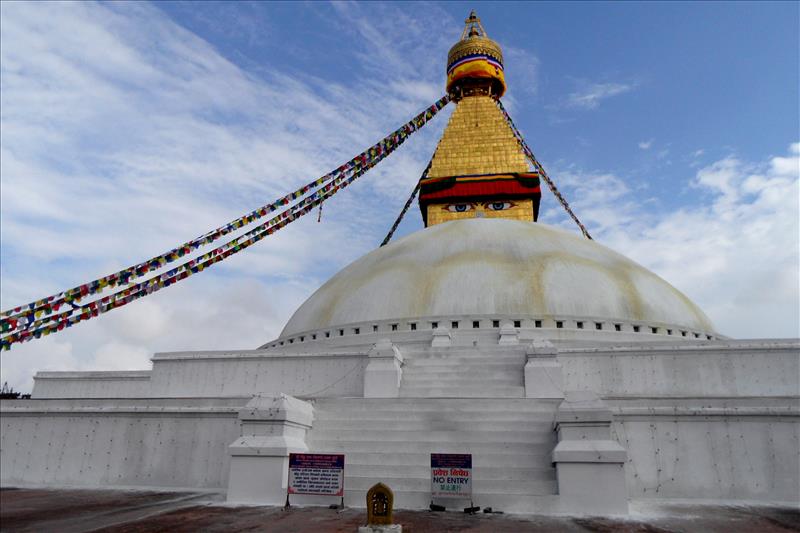
A taxi is the easiest way to get to the Great Boudha Stupa located some 11 km outside the city. Boudhanath is the biggest Stupa in the world, a huge white dome circled by a courtyard where Buddhists come to meditate. T
The original structure was built in the 5th century on the Tibetan trade route and subsequently remodelled over the ages. The dome tower and life tree spire were replaced after the 2015 earthquake.
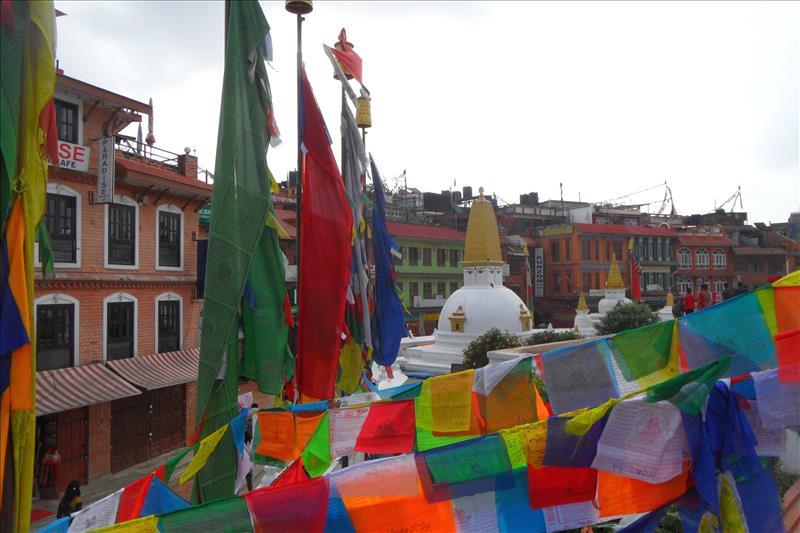
Typical coloured prayer flags are tied to the pole and the mantras are taken to heaven on the wind. The base of the stupa is adorned with sacred niches and visitors walk around clockwise according to custom. I noticed some lay down in devotion every so often.
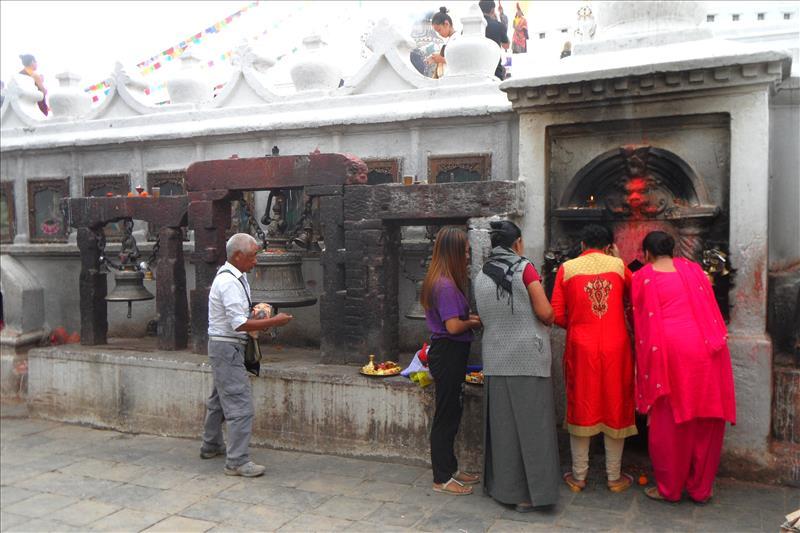
Inside the entrance to the Stupa there are shrines and traditional prayer wheels which you must spin as you walk around, always from left to right. I climbed up and around the three main platforms. Altogether there are nine levels and thirteen rings from the base upwards which symbolise the path to enlightenment.
One of the most intriguing experiences to see in Kathmandu is this group of monks walking around Boudhanath stupa performing an ancient Buddhist conch shell ritual.
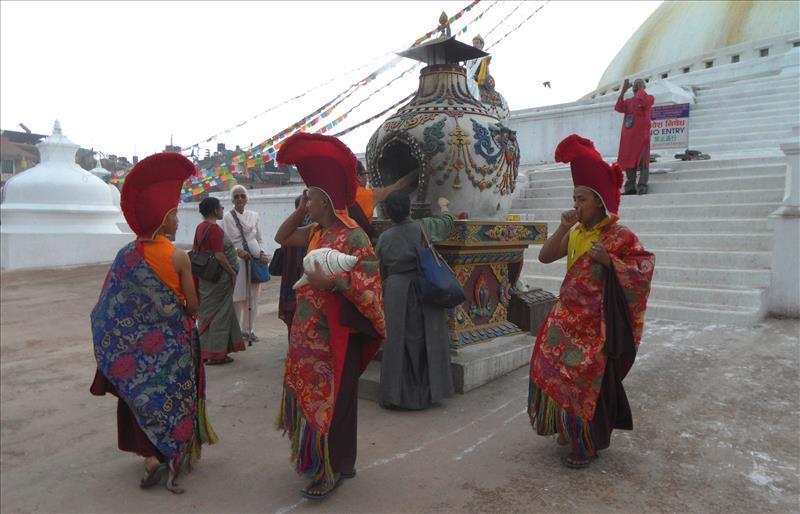
The Stupa is surrounded by quaint historic buildings and Buddhist monasteries. Street sellers holding trays of oil candles were being moved on by the local police, same as unlicensed vendors around the world really!
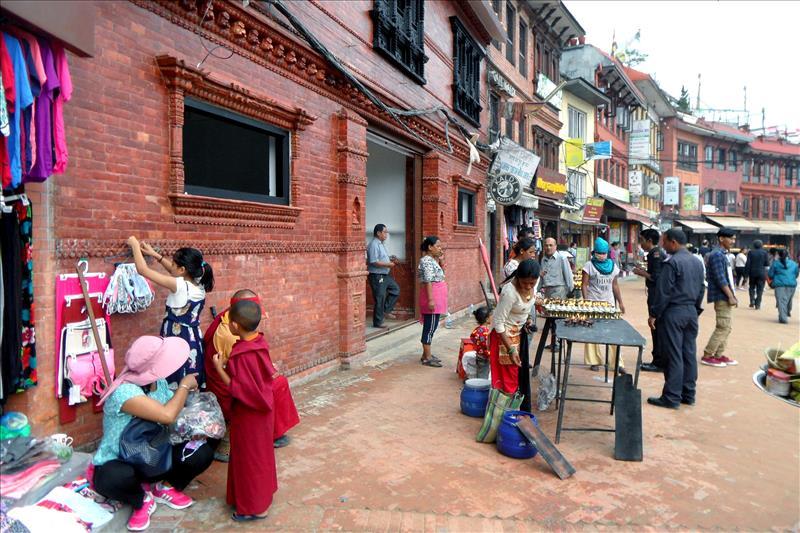
I sat quietly inside a temple listening to the monks chanting and breathing incense, then it was time to see the next site.
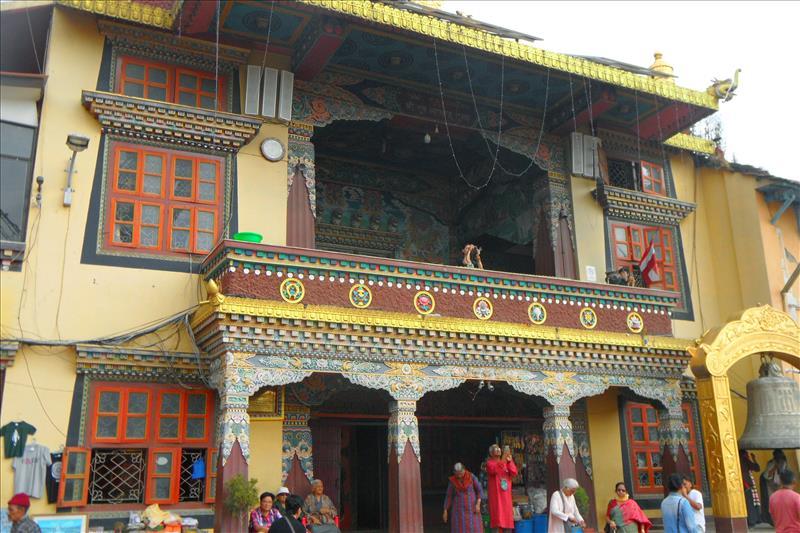
Pashupatinath
Pashupati is some 5 km from Kathmandu city centre and lies beside the Bagmati, a river which flows from the Himalayan Mountains down through the Kathmandu Valley and eventually on towards the Ganges in India.
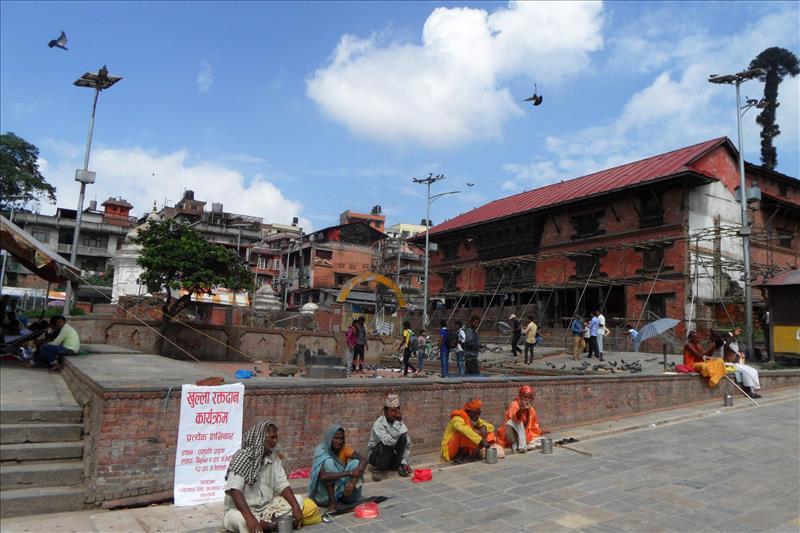
This World Heritage Site is a huge complex of temples and a sanctuary for sacred rituals. The area was badly damaged by the 2015 quake and shows much poverty; many parts the cultural heritage still has to be repaired which explains the 1000 rupee entrance fee.
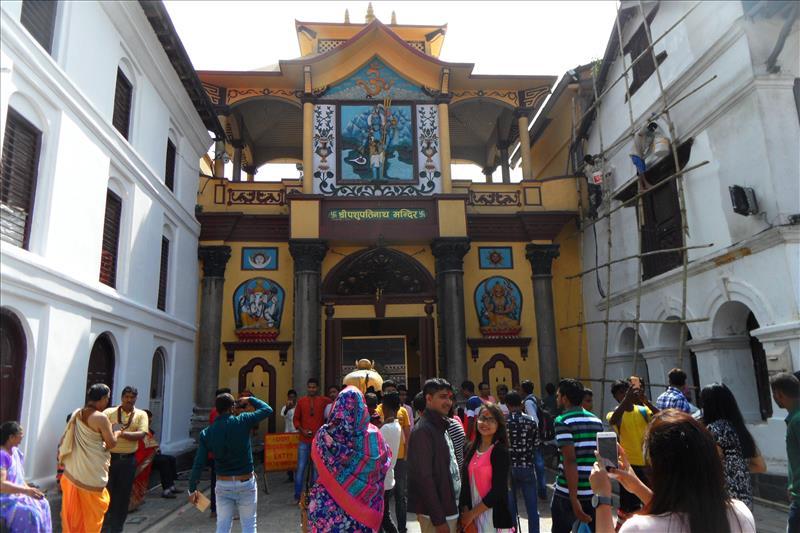
The main attraction, Pashupatinath is dedicated to Shriva, the God of Gods, and is reputedly one of the holiest temples in the world worshipped by Hindus and Buddhists alike. Rebuilt several times over the centuries the first recorded mention in 1120 AD when it was given a gold roof. Restyled in the 14th century with later additions in the 1900’s, original inscriptions date as far back as 459 AD.
As usual in Nepal, as non-Hindu we were not allowed inside the main temple.
I didn’t realise there was a second part to Pashupati…
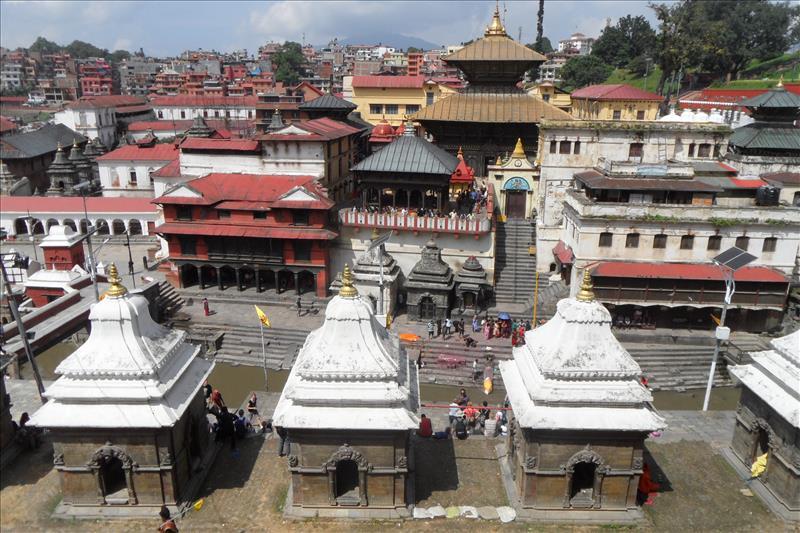
Kali Temple
The area is quite scenic I thought, as I followed BB towards the river, tree lined hills in the distance. It was amazing to see the small Kali Temple by a little bridge (Kali Travel is the name of my travel blog and my nickname). Kali is also the Hindu Goddess of life and death, the most powerful woman deity of all, which is quite cool!
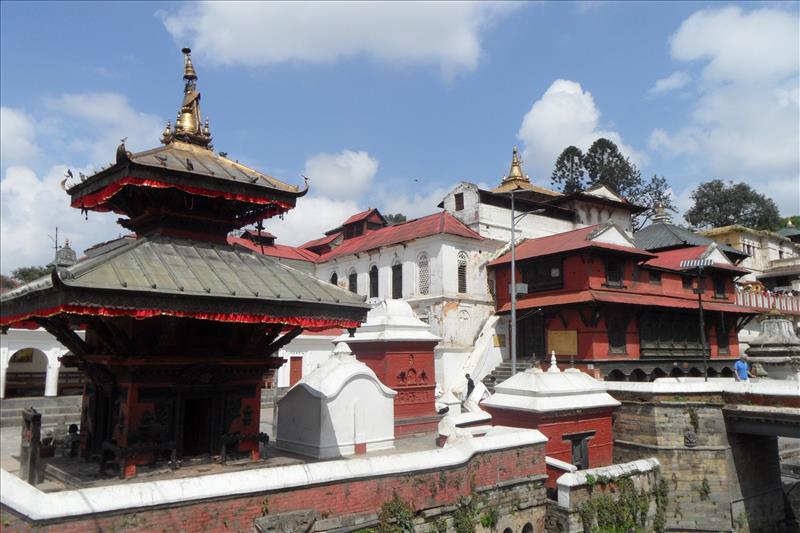
Cremation Ghats
Then came the second surprise; more of a shock really. Have you heard of Varanasi in India, infamous for the funeral pyres on the River Ganges? Well, this is the Nepal equivalent, the holiest of places where Hindus travel from across the country choose to die…and reincarnate here.
Although the atrocious custom of sacrificing the widow on the burning funeral pyre was abolished in the 18th century, the whole place can still seem a little unnerving. It helps to understand their firm belief that death is not to be feared and that reincarnation is a positive step onward in life.
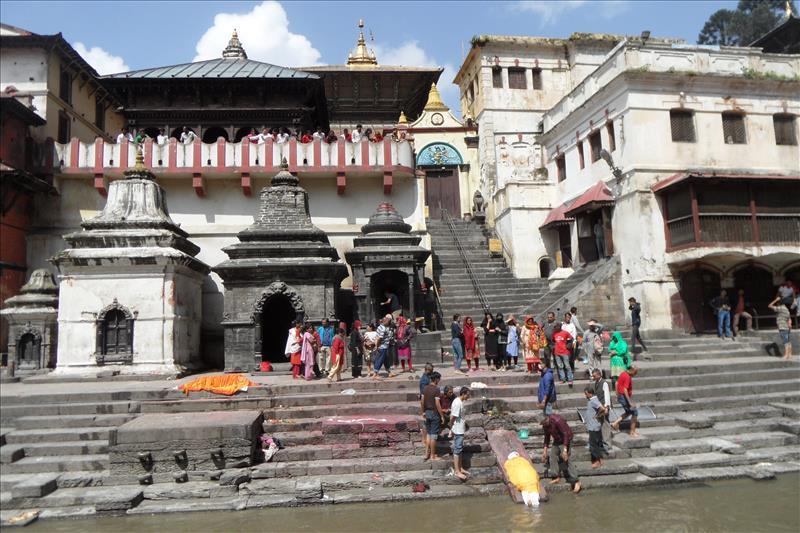
It also helps to watch through the lens of a camera, so there I was actually watching every detail of a Nepalese funeral ceremony, from a prudent distance on the other bank.
The recently deceased was covered in a shroud (which unfortunately resembled my newly acquired sleeping bag sheet), laid on the ground with feet touching the river edge. The family were standing just back, and each in turn come forward to say goodbye, sprinkling holy water on their relative’s feet and pouring a little into their mouth in a solemn ritual to purify the spirit.
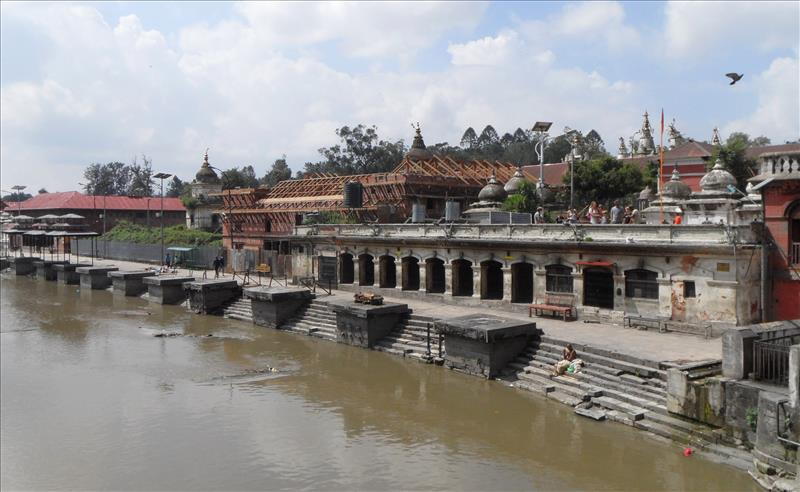
Across the bridge, lining the river were the funeral ‘pyres’ where the cremations are carried out on small stone platforms full of firewood. I didn’t wait to see the ceremony, when a flaming torch is put inside the mouth to cremate from inside out.
Baba Hermits
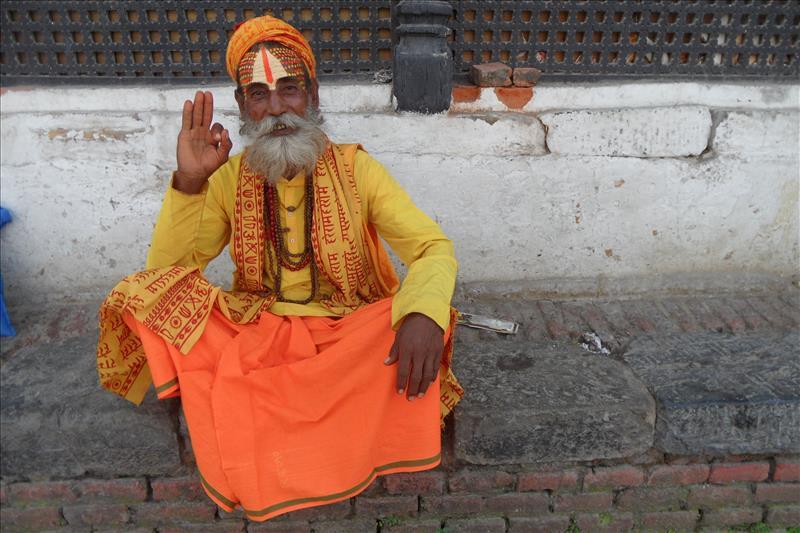
On the opposite hillside Baba hermits dressed in orange robes live in little shrines and although they do not beg they naturally welcome some notes in exchange for filming them.
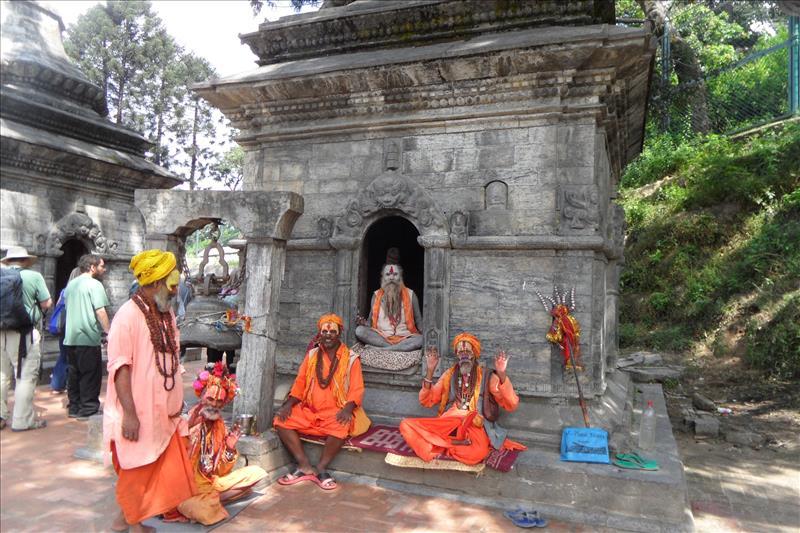
Dashain Festival in Kathmandu
In the evening we went to Kathmandu Durbar Square again which was lively with families celebrating the Dashain Festival. People were beautifully dressed up, many in traditional costume, especially the married ladies who wear red. This was the day when animal sacrifices (goats and oxen) are carried out in the square so, like most Western tourists, we had come later on to avoid it all.
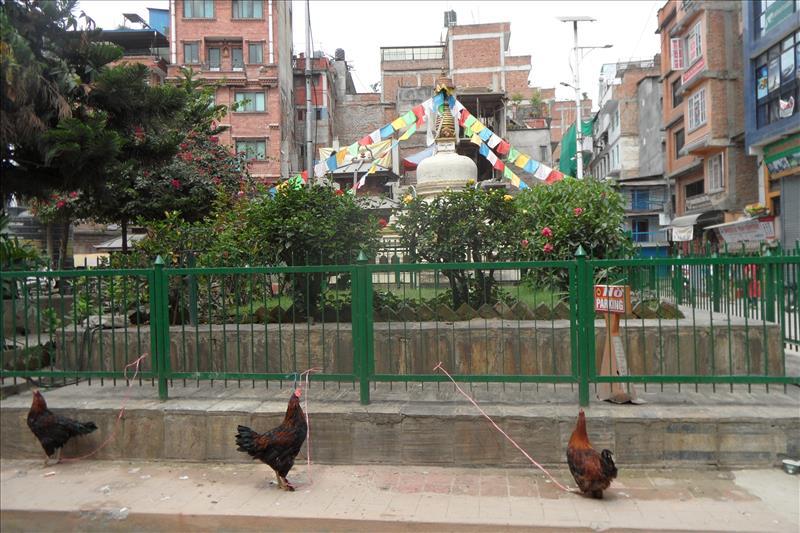
I did see a procession through the narrow streets as Hindu Priests were helped along by carers as they passed by in a state of meditation (they actually looked high) the onlookers kissing them in reverence.
Enough of holy rites for one day, we enjoyed the rest of the evening with the Bhandaris who introduced us to Nepalese beer – Everest, Tuborg and the potent Nepal Ice!
For information on treks and activities in Nepal contact BB Bhandari at Nepal Adventure Point.
Related Posts on Kathmandu Valley and Nepal
Continue reading about our amazing adventure in Nepal
Poon Hill – 6 Day Annapurna trek
The trail was flatter for a while, winding through forests which are bright with Rhododendron blooms in spring.
After an uphill stretch we reached Ghorepani, the village that lies under Poon Hill.
See our related posts on Nepal
- Kathmandu – Thamel and Kathmandu Durbar Square – First stop on our around the world trip!
- Kathmandu – Patan City and Swayambhu Temple
- Kathmandu – Boudhanath Stupa and Pashupatinath Temple
- Poon Hill Trek part 1 Nayapul – Hile – Ulleri – Ghorepani
- Poon Hill Trek part 2 Poon Hill Summit – Tadapani – Ghandruk
- Poon Hill Trek part 3 Landruk – Tolka – Dhampus
- Pokhara Lake
- Chitwan National Park
- Diwali Festival of Lights in Kathmandu
- 12-day Nepal Itinerary – Kathmandu Diwali Festival and Himalayan Trek
Discover the World with ![]() the blog with a focus on independent budget travel.
the blog with a focus on independent budget travel.




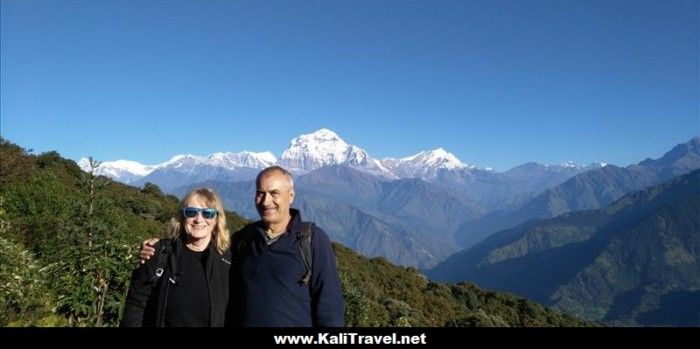
Thanks a lot for giving everyone a very remarkable chance to read in detail from this web site. It’s usually very amazing and also jam-packed with fun for me personally and my office peers to search your website the equivalent of 3 times every week to read through the new stuff you have got. Of course, I am also usually pleased for the special inspiring ideas you give. Some 2 tips in this article are undeniably the most impressive we have ever had.